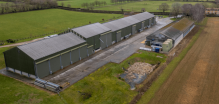Specifically, the study evaluated individual components in buildings and how they work together. Results showed that customized, layered mitigation strategies can reduce the risk of airborne transmission of pathogens by up to 80%. Tactics such as managed occupancy, increased filtration and ventilation, air scrubbers and air purifiers can help to create healthier and safer indoor environments. Primary support for the study came from Carrier.
In the study, Syracuse University estimated virus generation rate based on published case studies for SARS-COV-2 outbreaks, defined the baseline space conditions for different type of buildings, and then applied the widely adopted Wells-Riley equation to estimate the baseline risks.
"Applying this aggregated data and risk calculation, we then quantified the potential for reducing airborne transmission risk by using various indoor air quality control strategies including source control, ventilation and air cleaning," said Syracuse University mechanical and aerospace engineering Professor Jensen Zhang. "It is encouraging to know that significant risk reduction can be achieved."
"Our new assessment tool provides a new and innovative way for Carrier experts to examine individual components in buildings and how they work together, to recommend a layered strategy that ultimately reduces risk of airborne transmission of pathogens," said Rajan Goel, senior vice president, Carrier Building Solutions Group and leader of Carrier's Heathy Buildings Program. "The tool provides us a very effective mechanism for improving our customers' overall indoor air quality and efficiency."
Carrier worked with leading institutions to advance the body of knowledge. Most recently, Carrier worked with the University of Colorado Boulder to examine ventilation rates in K-12 classrooms and found that 60% of the classrooms studied in the Denver area were below recommended ventilation levels. Carrier also supported groundbreaking research with Harvard's T.H. Chan School of Public Health and the Indoor Environmental Quality lab at Syracuse University's Center of Excellence that reviewed the effect ventilation can have on cognitive function. The Impact of Green Buildings on Cognitive Function study found a doubling of cognitive function test scores among study participants in green buildings with enhanced ventilation.


















